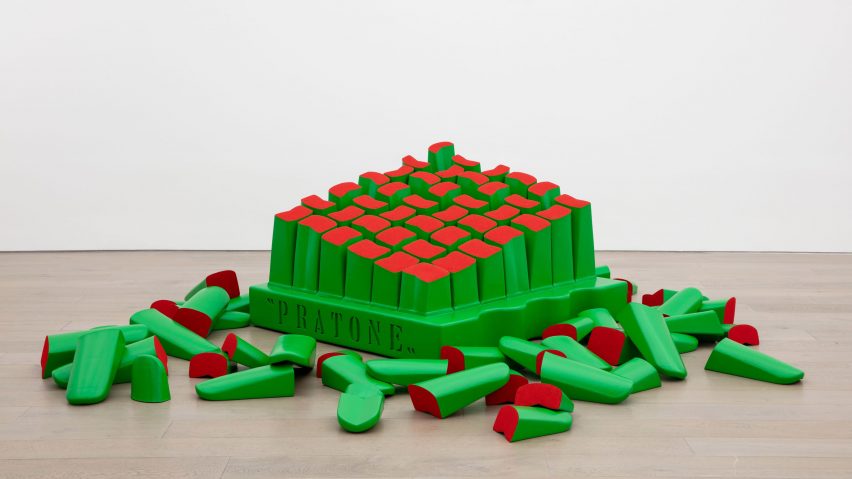
MSCHF investigates radical roots of design by revealing the "innards" of Pratone chair
Art collective MSCHF has sliced off the tips of Italian furniture company Gufram's popular Pratone chair to highlight the "revolutionary" roots of contemporary design objects for a New York exhibition.
Held at Perrotin gallery in the Lower East Side, the For Industry Plants exhibition was launched to create a dialogue between Gufram's participation in Italy's 1960s Radical Design movement and contemporary consumerism in art markets.
MSCHF collaborated with Gufram on two "interventions" on the brand's Pratone chair and the Cactus coatrack, which were displayed alongside three new pieces and previous creations from the art collective.
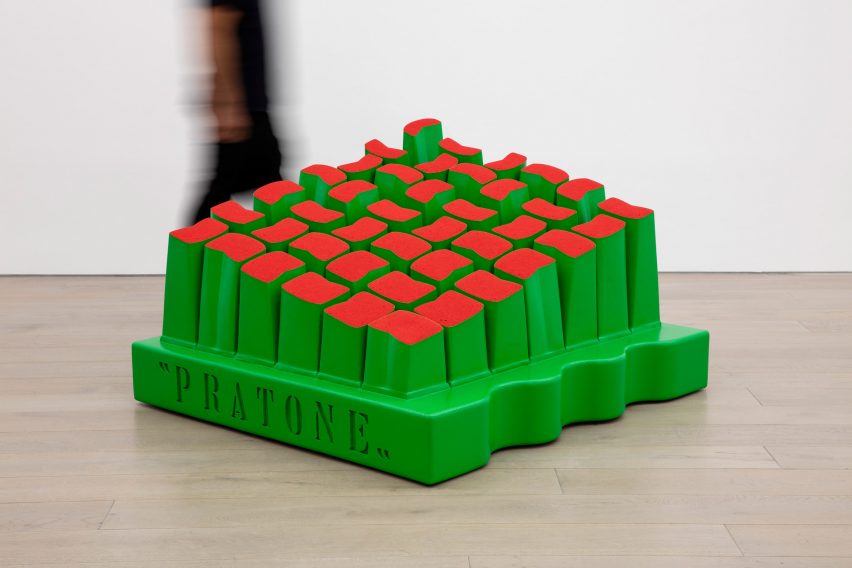
"We selected two Gufram objects from the design canon that are artificial (foam even!) but simulacra of natural objects, namely plants!" MCSHF co-founder Kevin Wiesner told Dezeen.
"We then set out to further investigate this artificiality, by cutting the grass to reveal the flesh, and by mounting America's favorite 5G hardware to the cactus."
The Gufram collaboration was meant to poke fun at issues in the creative industries and point to the radical roots of certain design pieces.
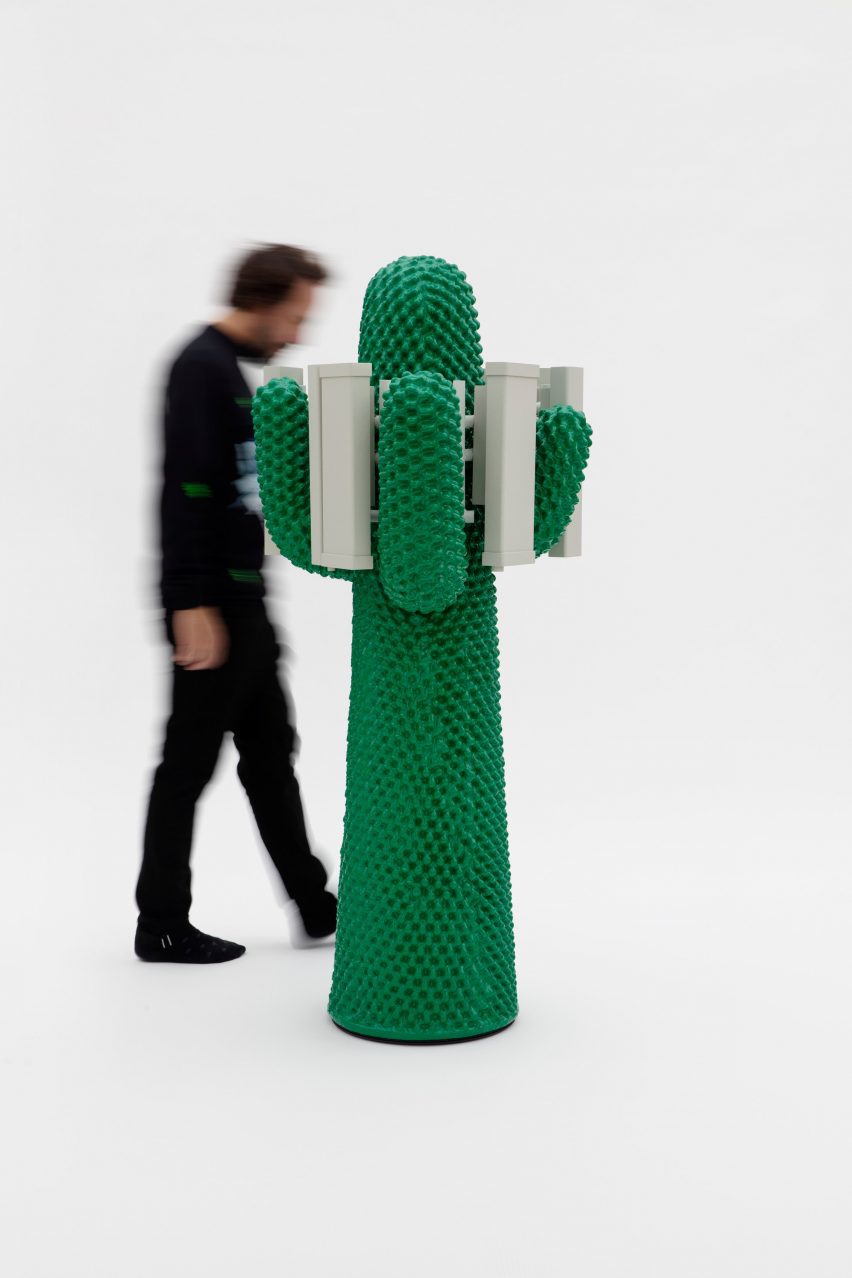
Gufram's Pratone chair, which is composed of bright green foam tentacles that resemble blades of grass, was originally designed in 1971 to question the conventions of seating design and society's relationship to the natural world in light of hyper-consumption, according to writer Elizabeth Koehn who produced an essay for the exhibition.
MSCHF sliced off the blade's tips, rendering the clippings' interiors a bright red, and scattered them around the base as a continuation of the original prompt and a "reconsideration" of the Pratone itself.
"Over fifty years later, in Cut Pratone, MSCHF prompts a reconsideration of both the original question and the design that posed it by slicing through the thicket, scattering clippings and revealing the Pratone's bloodied foam innards," said Koehn.
"It is only through MSCHF's dissection of Pratone that we can recognize the persistent, pulsing vitality of the original design's revolutionary aspirations and its immediate relevance to the conditions of our ecological and cultural present."
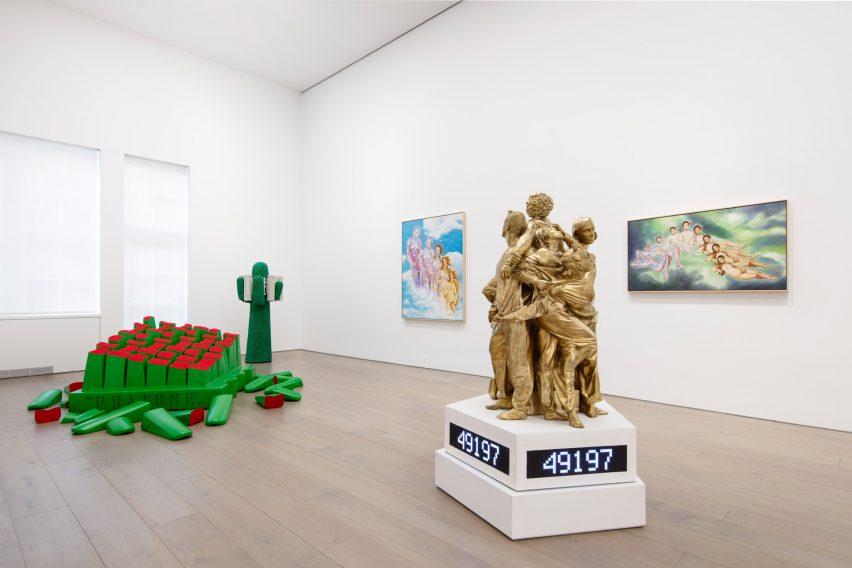
For the Cactus coatrack intervention, which has undergone multiple reimaginings since its creation in 1972, MSCHF placed a fibreboard and aluminium "antenna" around its arms.
The combination references the 5G antennas running along a highway, which are often concealed by faux branches.
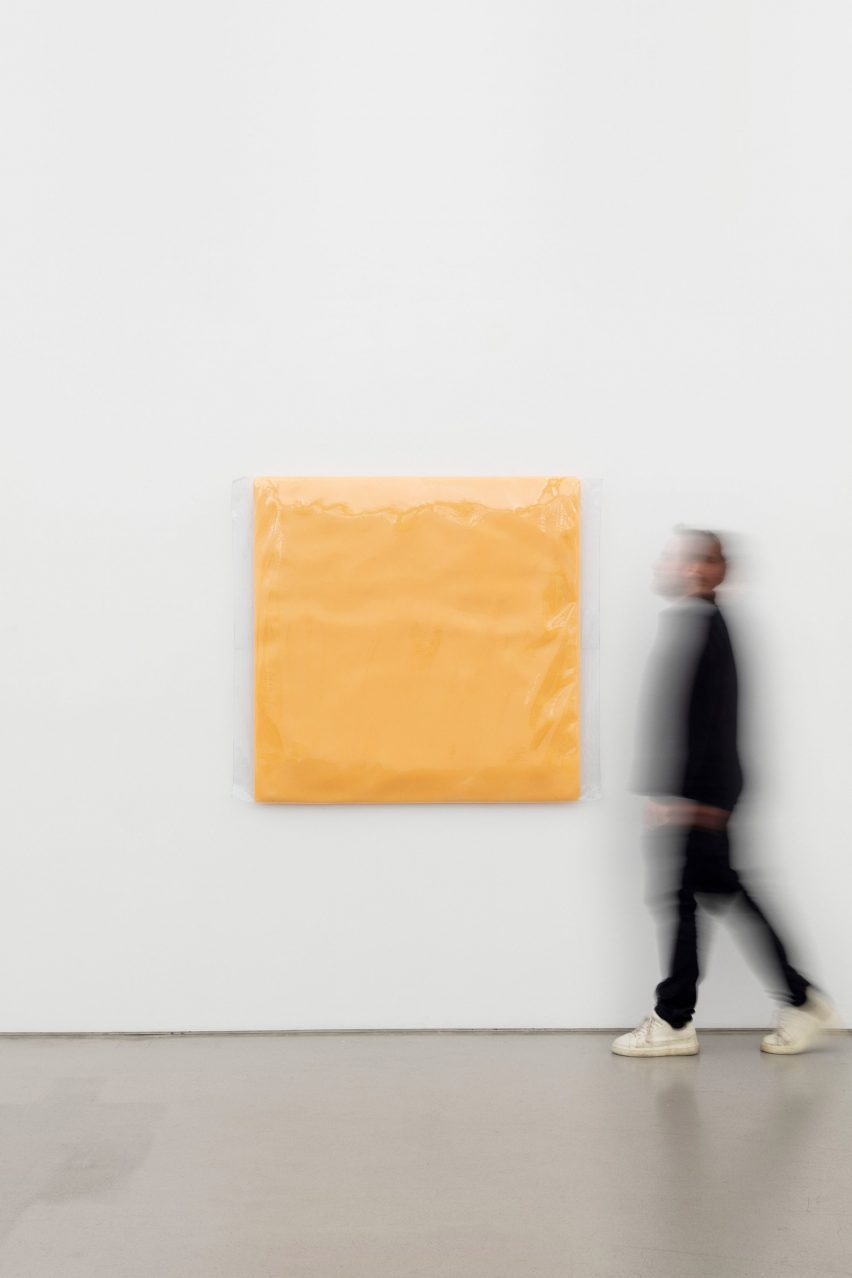
"The feebleness of these attempts to naturalize (and neutralize) technology's omnipresence are often laughable, but they take on increasingly high stakes as bogus conspiracy theories surrounding the nefarious impacts of 5G technology," said Koehn.
MSCHF's other work for the exhibit includes two paintings based on the Animorphs book series as well as a sculpture that records and displays the touch of passersby. The sculpture was created in protest of the prohibition of touching art in many galleries and museums.
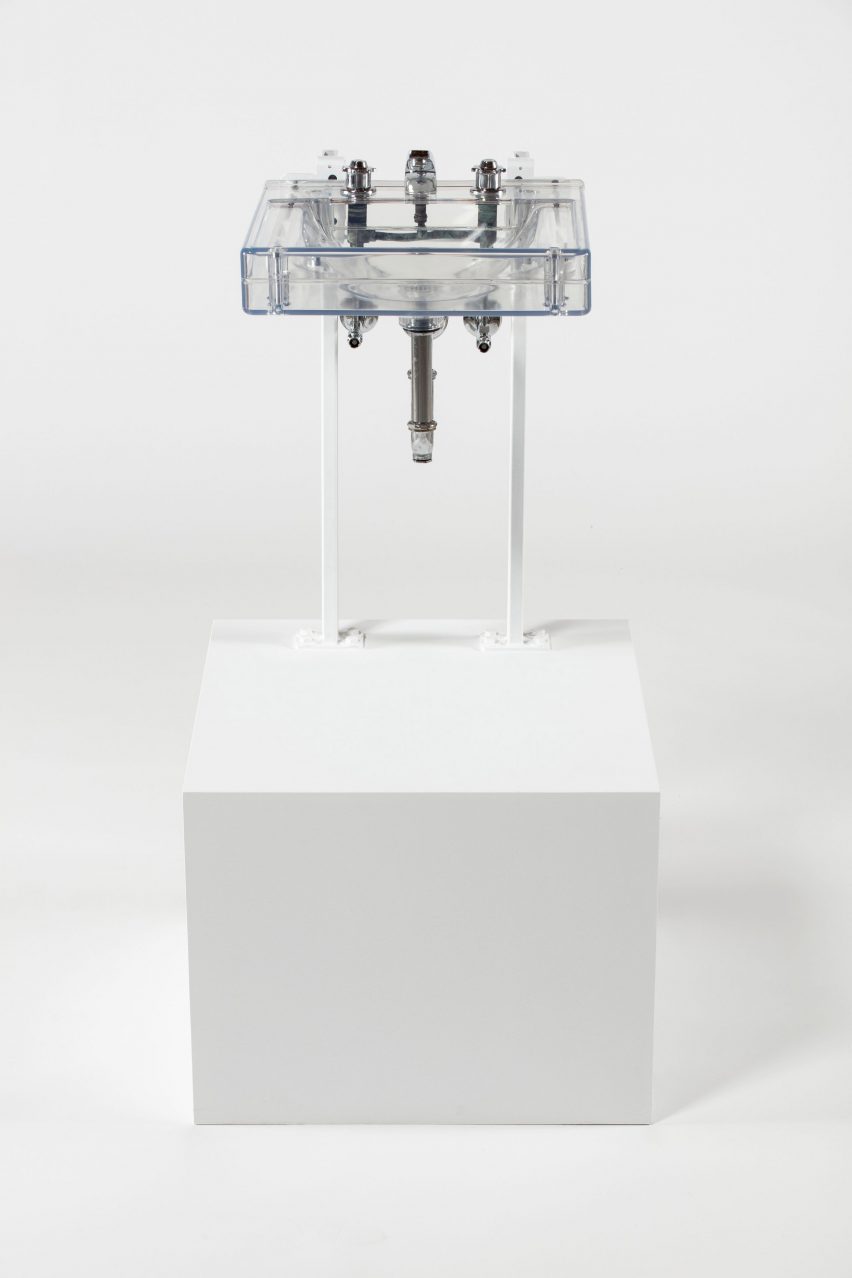
For the Botched Masters artwork, MSCHF sought to question "what constitutes a masterpiece" by purchasing two 17th and 18th-century religious paintings and covering them with their own designs.
MSCHF's previous objects on display include an oversized singlet of American cheese and the translucent Met's Sink Of Theseus work, which shows the result of a project where the team smuggled pieces of a sink from the Metropolitan Museum of Art and replaced them with nearly identical pieces marked with a MSCHF signature.
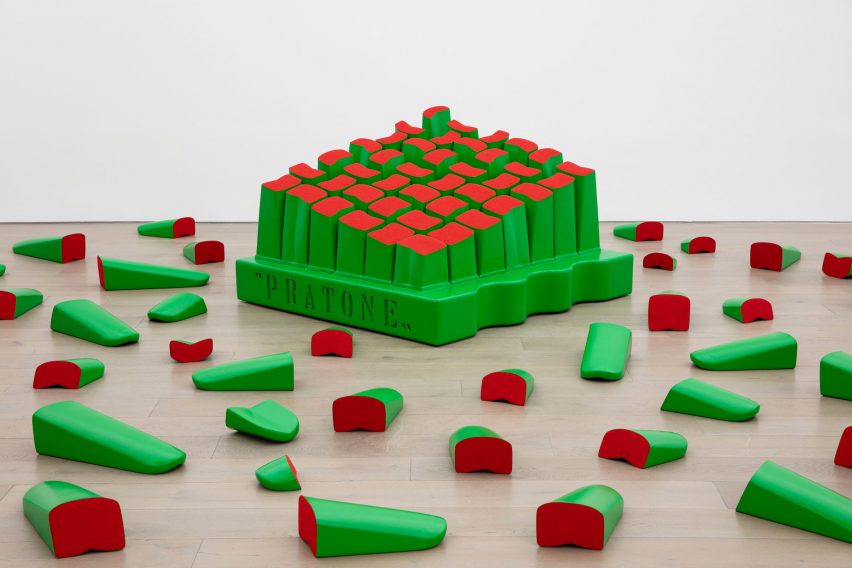
MSCHF is known for its objects, artwork and stunts that bring light to systematic issues within the design industries, including a handbag created to highlight the "hidden creative labor" undertaken by factories.
The images are by Guillaume Ziccarelli.
Industry Plants is open at the Perrotin Gallery in New York from 6 September until 19 October 2o24. For a comprehensive listing of architecture and design events, exhibitions and talks see Dezeen's Event Guide.